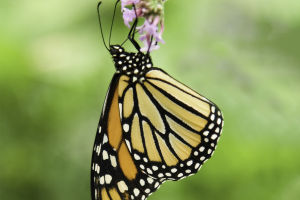Imagine stepping into the shoes of a honeybee.
Despite your small size—your wings less than a centimeter long and your body weighing barely a gram—your world is anything but ordinary!
You soar through vast landscapes filled with towering creatures and plants, while your keen eyes detect colors and patterns beyond human perception. And your antennae, fine-tuned to the faintest scents of distant flowers, bring an added layer to your already remarkable sensory experience.
For years, scientists have speculated that bees may possess a unique sense that humans lack—the ability to detect static electricity. This form of electricity, which builds up on objects as they move through the air, is something we've all felt: ever get shocked after shuffling across carpet?
While aquatic creatures like sharks or eels can detect electricity in water—its natural conductor—air doesn’t carry it as efficiently. However, it might still be enough to have an impact on living creatures.
In 2013, a breakthrough study led by Daniel Robert, a sensory ecologist at the University of Bristol, uncovered the ability of bees to detect and distinguish between electric fields emanating from flowers. This discovery opened up a new frontier of research, showing that other creatures, including spiders and ticks, also tap into this electric world.
This finding holds significant ecological implications. Parasites, like ticks and roundworms, can hitch rides on the electric fields of their larger animal hosts. Spiders, through a behavior known as "ballooning," extend a silk thread into the air to catch electric charges, allowing them to travel vast distances.
The concept of "aerial electroreception," as this field is known, is still in its infancy, but it promises to reveal new dimensions of the natural world. As Anna Dornhaus, a behavioral ecologist at the University of Arizona, observes, this growing area of research could uncover interactions in nature that were previously unimaginable.
A particularly intriguing finding comes from the work of Víctor Ortega-Jiménez, who discovered the electrostatic nature of spider webs. While experimenting with static electricity, he noticed that a negatively charged spiderweb would attract positively charged insects, like flies or aphids.
The importance of electrostatics in the insect world goes beyond individual behaviors. For these small creatures, electrostatic forces are a powerful tool that can influence their survival, migration, and even their role in pollination. For instance, bees, when feeding on nectar, can accumulate static electricity that allows pollen to leap onto their bodies—without physical contact—boosting their pollination efficiency.
At the University of Bristol, researchers like Sam England are investigating how static electricity affects insects like moths and butterflies. His research suggests that butterflies, through their flight, can build up significant static charges, which may help them collect pollen or avoid predators. The ability to detect these invisible electric fields could give these creatures a survival advantage.
But what does this mean for evolution? Could electrostatic sensitivity be an adaptive trait that helps species thrive? It's an open question. Some researchers, like Benito Wainwright, caution that while electric fields undeniably play a functional role in these creatures' ecologies, it’s unclear whether these traits evolved specifically for this purpose or arose incidentally.
It’s becoming increasingly apparent that electrostatics is a force that significantly impacts the natural world, even if it remains largely invisible to the human eye.
As scientists continue to probe this hidden layer of the environment, it’s possible that many of the complex behaviors we observe in insects—pollination, predator avoidance, migration—could be influenced by these subtle electric forces. The more we learn, the more it becomes clear: the world of insects is far more electrical than we ever imagined!


